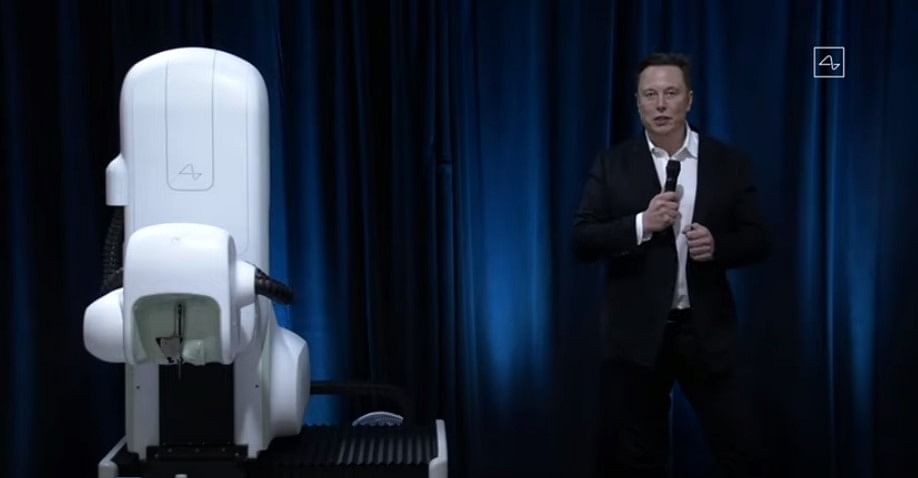
Last year, Billionaire Elon Musk, for the first time, made a public announcement that his company Neuralink would develop an advanced brain-computer interface system. Musk also showed a prototype, which needed to fit behind the ear and came with thin wires(4 to 6 μm in width) to connect with the brain. It was tested on lab rats and Musk had envisioned doing trials on humans in the near future.
The main purpose of the 2019 event was to attract more people to join the Neuralink project to take it to the next frontier. And now, going by the demo on Friday (August 28), the company has made some significant progress.
Though neuroscientists for more than one and half decades have done similar experiments particularly on people with amputated palms. Currently, such devices are big and have only 6-16 wires, which can connect to neurons and perform limited functions. They have been able to help a little over 150,000 people.
Now, Elon Musk believes Neuralink will take this to the next level. The latest Neuralink device comes in compact dimensions as small as a coin and thin wires that can house more electrodes than any other in the world.
As per the official document, the latest Neuralink device Link V0.9 measures 23x8mm and comes with 1024 channels (wires), 6-axis IMU (Inertial Measurement Unit), temperature and pressure sensor, Megabit wireless data rate post the compression and offers one-day battery life. It needs to be charged overnight.
Neuralink's device can be installed on the skull within an hour without the need for general anesthesia. It actually replaces the portion of the skull and fit into that place with super glue and skin is placed on top. Once done, it blends into the skull with flush hair on top over time, Elon said.
All the 1,024 channels with electrodes (to pick up brain activity) directly communicates with brain cells and the chipset can wirelessly transmit and receive signals from a computer via Bluetooth LE with a range of 5 to 10 meters.
The company showcased the demo using a pig implanted with the device in a particular place of the brain, where neuron cells connect the link between the snout and the brain. When the pig touched a surface or food, there was a signal spike on the monitor confirming the direct connection between the brain and the computer.
Musk also added that they can implant multiple Neuralink devices on the skull without many scares. He also showed another pig, Dorothy, which had an implant but was removed to illustrate the reversibility aspect. This means the Neuralink device can be taken out without injury and if need be, users can upgrade to a new version of the device in the future without any hassles.
In terms of human trials, Musk said Neuralink has received a 'Breakthrough device' designation from the federal Food and Drug Administration (FDA), earlier this year in July. This means, it is close to getting approval after further safety testing and can go ahead with testing on people in the near future.
They have the intention to do trials first on people with tetraplegia (or quadriplegia), who have lost motor functions such as the ability to walk and lift things.
Musk said Neuralink will go the extra mile to make it extremely safe beyond FDA's standards. And, during the presentation, he invited neuroscientists and engineers to join the Nueralink (for jobs email to engineering@neuralink.com). Now, the Neuralink has 100 employees and has plans to grow to 10,000 workforce in the near future, which will fastrack improvements on the device.
Some of the challenges Neuralink is facing is that the prototype device can only last a day and the wires with electrodes can physically erode in the corrosive environment of the skull and needs frequent replacements. The immediate aim of the company is to improve the durability and battery longevity.
During the Q&A session, Elon Musk took questions from Twitter and one of the enthusiasts asked if the commercial variant of the Neuralink would enable him to summon his Tesla car by just thinking in the head. To that Musk affirmatively said it is possible. Also, the team has a functional target of using the same device for enhanced gaming as well.
However, the ultimate use-case of the Neuralink device is to help paraplegic people with spinal injuries, strokes and Parkinson's disease, Alzheimer's disease and other brain memory disorders, do normal motor and sensory functions. There is also a possibility to get back the hearing capability and even eyesight caused by neural damage.
Nueralink device promises lots of things, not just medical benefits but also capable to completely change the lifestyle of the common people in the future. It remains to be seen when the commercial version of the Neuralink device hit stores.
Get the latest news on new launches, gadget reviews, apps, cybersecurity, and more on personal technology only on DH Tech.
